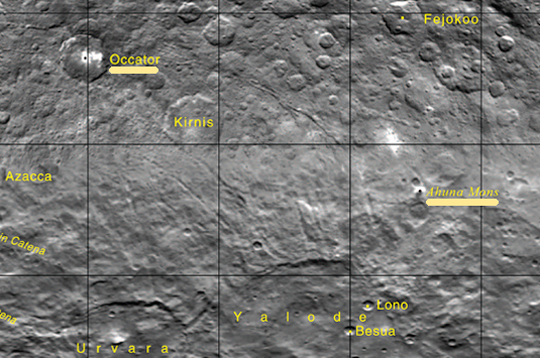“Whether there is water in liquid or solid form underground on Ceres will depend not only on the (internal) temperature, but also on the specific composition of the materials that are dissolved in it.”
- Marc Rayman, Ph.D., Director, Dawn Mission, JPL/NASA, Pasadena, CA

December 18, 2015 Pasadena, California - After spending August to October at 915 miles (1,470 km) above Ceres — that 600-mile-diameter dwarf planet between Mars and Jupiter — NASA's Dawn spacecraft on October 23rd fired up its ion engine to lower another 675 miles. In a couple of weeks by Christmas 2015, Dawn will be in its lowest and final mapping orbit of 240 miles above Ceres, photographing at a resolution of 120 feet (35 meters) per pixel. By 2016, the engine will run out of fuel and Dawn will then be a permanent, but non-working, satellite, orbiting Ceres.
Click here to subscribe and get instant access to read this report.
Click here to check your existing subscription status.
Existing members, login below:
© 1998 - 2024 by Linda Moulton Howe.
All Rights Reserved.

